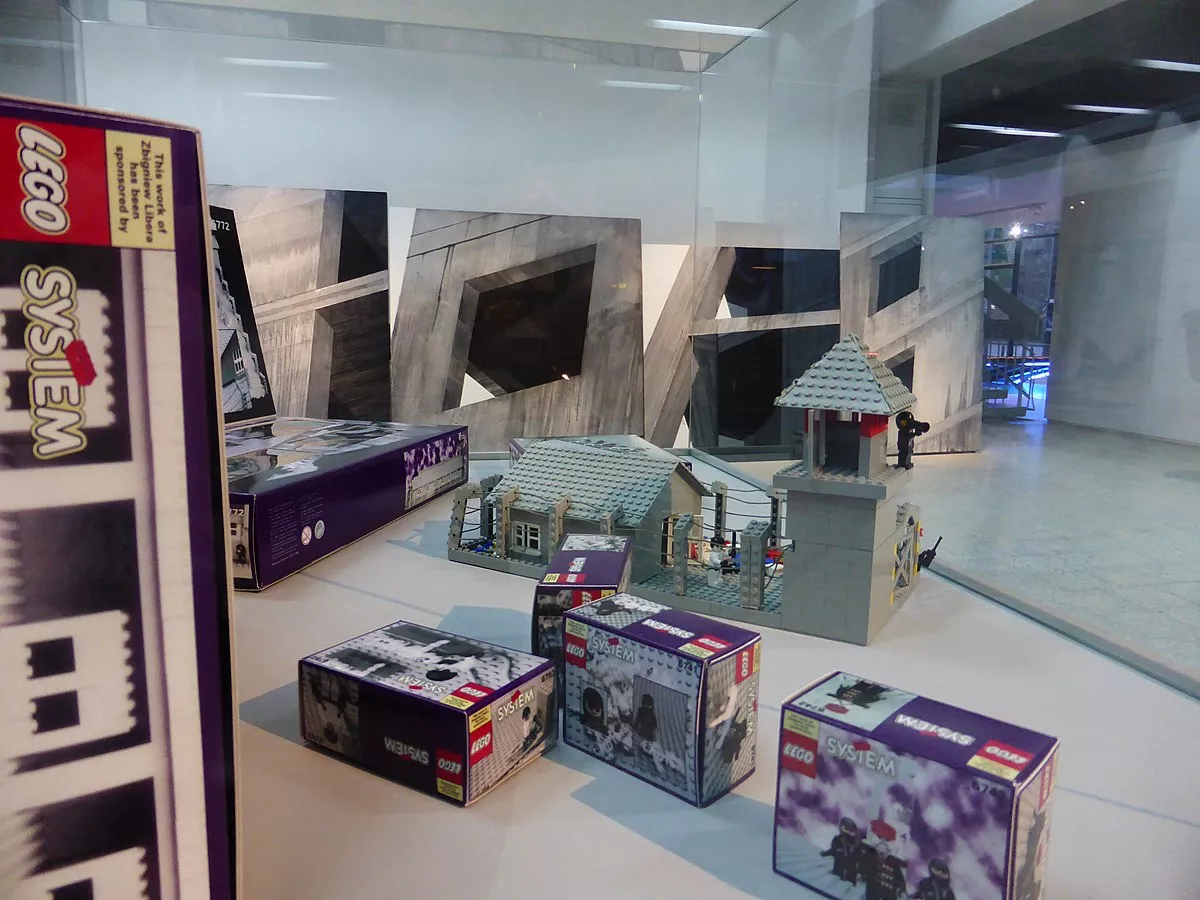 1.
1. Zbigniew Libera is best known for his controversial 1996 artwork named LEGO Concentration Camp, depicting a Nazi concentration camp made out of Lego bricks.

 1.
1. Zbigniew Libera is best known for his controversial 1996 artwork named LEGO Concentration Camp, depicting a Nazi concentration camp made out of Lego bricks.
Zbigniew Libera is famous for his photography and videography such as Intimate Rites, How to Train Little Girls, and Pozytywy.
Zbigniew Libera spent much of his life in Poland and studied at the Nicolaus Copernicus University in Torun.
Zbigniew Libera began his career as an artist in the mid-1980s, working with an avant-garde group known as "Sternenhoch".
In December 1981, during the Communist rule of Poland, Zbigniew Libera created, printed and published leaflets, posters, and political cartoons designed to challenge laws that were introduced to suppress protests at the Wujek Coal Mine, which eventually led to the Pacification of Wujek.
For distributing anti-government material, Zbigniew Libera was arrested in 1982 and sentenced to a total of eighteen months in prison.
Zbigniew Libera is best known for his artwork LEGO Concentration Camp, created in 1996.
LEGO Concentration Camp includes boxes for the sets that were designed to closely resemble actual packaging used for Lego sets, with the box designs including text labels reading "This work of Zbigniew Libera has been sponsored by LEGO", prominently featuring the Lego logo.
Zbigniew Libera viewed the donation as direct sponsorship and support for his work, and thus placed labeling on the packaging claiming The Lego Group had sponsored the work, despite The Lego Group not knowing what the bricks were going to be used for.
Notable criticism came from The Lego Group itself, who believed Zbigniew Libera created the piece intending to be the centre of debate and attention.
Zbigniew Libera made consistent attempts to combat criticism, stating that it was never his intention to provide a LEGO Concentration Camp to children as a toy and that he only had artistic intent in making the work.
Zbigniew Libera clarified that the meaning behind the artwork was to highlight the contrast between the horrors of the real world, and the perfect world presented to children.
Joan Sall, curator of the Levinthal exhibition in the Museum of Judaica, supports Zbigniew Libera's artwork, arguing that it cleverly demonstrates an ironic point of view, where an otherwise innocuous children's toy is used to show a destructive moment in history.
Sall argues that the clear irony of Zbigniew Libera's artwork signifies that the Holocaust is not just Jewish history, but world history.
Zbigniew Libera's rise to fame as an artist began in the 1980s in Europe when he released a video series beginning with Intimate Rites, followed by How to Train Little Girls, and Mystical Perseverance.
Intimate Rites is allegedly influenced by the treatments that Zbigniew Libera's grandmother endured in her later life, such as being showered, being spoonfed, and having her diapers changed.
Zbigniew Libera created a series of photographs named Positives, which includes photos of Wehrmacht soldiers destroying a border barrier in Gdansk in 1939, a Vietnamese girl escaping Trang Bang during the Vietnam War in 1972, and prisoners of a liberated concentration camp.
Mistrzowie is another photography series by Zbigniew Libera that captures sections of published newspapers and magazines that feature interviews with other artists in his league.
In 1995, Zbigniew Libera released a piece titled Kens Aunt, consistent of twenty-five copies of a Barbie box-like packaging design and bubble wrap.
Similar to Kens Aunt, Zbigniew Libera created another four-box set titled Eroica, which featured tiny female figures based on models of slaves.